Bird Photography - Great White Egrets
Field Notes, Techniques & Suggestions
Since buying my first SLR camera, a Nikon D200 in 2006, one of my favorite subjects to photograph are Great Egrets, and my favorite location is the Sepulveda Basin, Los Angeles River Wildlife Reserve. Initially I spent an hour or two almost every morning photographing these birds in an effort to learn how to use my camera. As the months passed, my appreciation for these magnificent creatures increased, as did my passion for photography in general, as well as enthusiasm for helping preserve these urban eco-systems. I now shoot with a Nikon D300 &/or D800, and thoroughly enjoy my time with the Egrets (and herons), which are amazingly elegant and graceful, while also possessing bold, predatory, powerful and territorial characteristics, which to me is a perfect dynamic combination to focus upon.
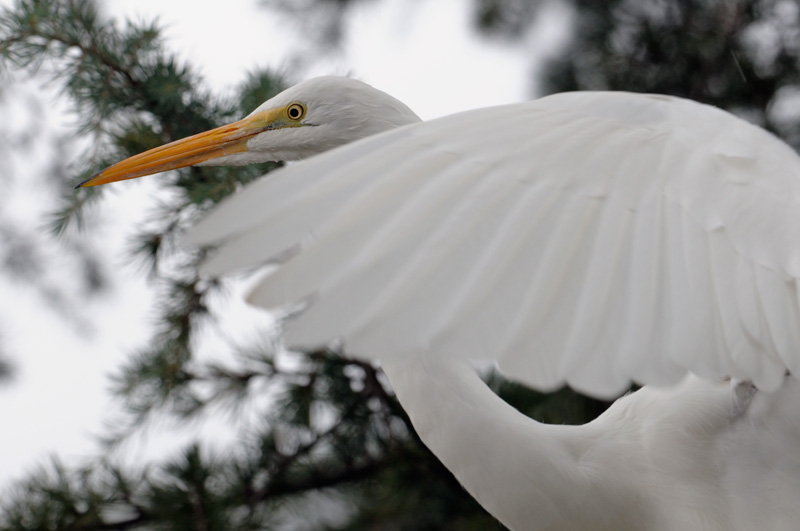
Sometimes I position myself directly on the water's edge, as early as possible in the morning, with the sun at my back, practicing flight photography, occasionally until noon, because light reflects up from the water illuminating beneath the wings. Other times I stand back, hoping to capture action in the trees, where the egrets like to perch, eat fish and squabble. Egrets seem to never stop annoying each other and constantly assert their presence. Actually, they seem to enjoy relentlessly irritating each other, probably trying to solidifying their pecking order, in a never ending process. I often fill an 8gig card in about two hours, hoping for a few shots that catch my eye, basically something different, or elegant, rather than a standard documentary style image and I'm always thrilled upon capturing these elegant birds performing an aerial ballet.
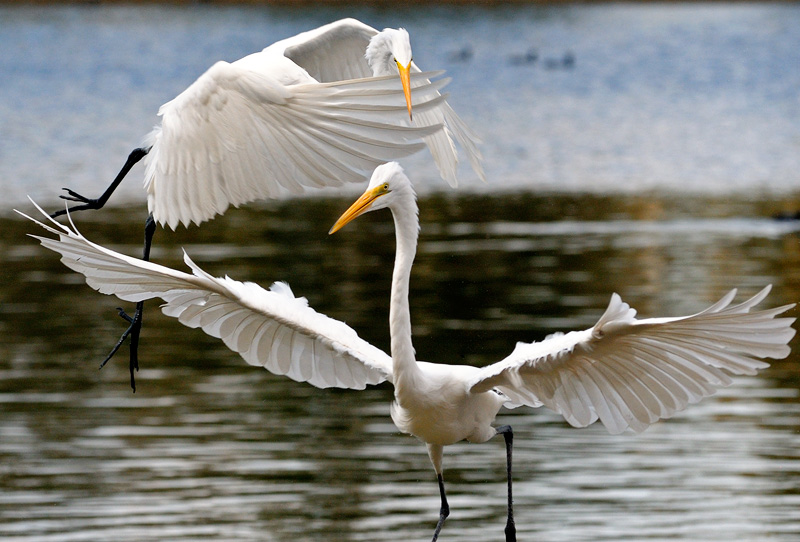
I think the secret is keeping alert, and constantly trying to learn the birds' flight patterns, their favorite trees, angles of approach and departure. I think it just boils down to putting in time and attention, and getting in tune with the birds.
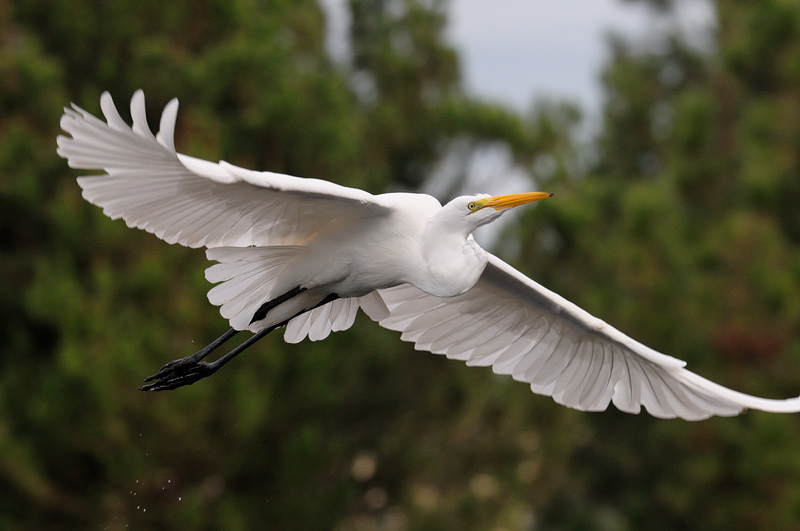
Finding a place to get close to the birds is the key to my success. I just love my newer Nikon D300 and 300mm f4 lens. I can wear it around my neck all day because it's so light weight, and there are other advantages when compared to people shooting off tripods with long glass. I can point straight up in the air, spin around quickly when I hear an incoming bird, quickly change positions, etc. I have heavier, faster, and more expensive lenses, but generally my favorite is the compact lightweight 300mm f/4, for shooting egrets at close range.
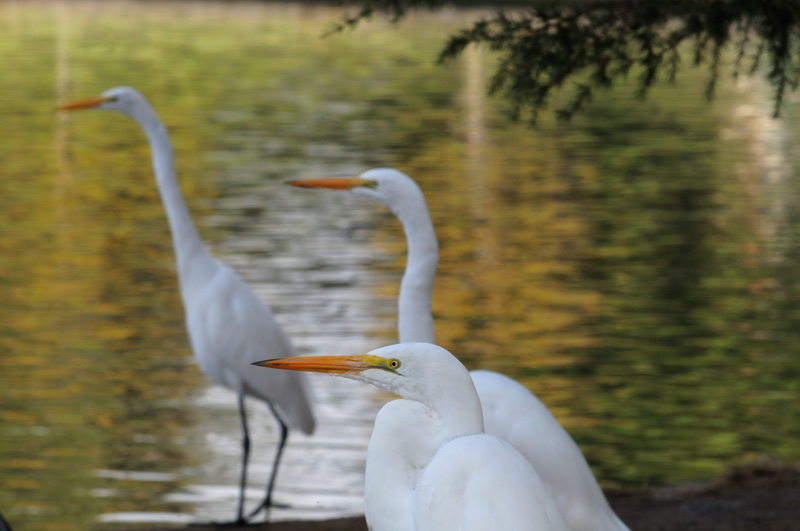
With respect to camera settings, shutter speeds faster than 1/1000's of a second allows for capturing images of birds in flight while freezing the action. Aperture and ISO are frequently adjusted in an effort to maintain shutter speed. I typically meter the concrete edges of the lakes and river, a neutral light gray color, to determine correct exposure settings. Whenever possible I choose to use an aperture of f/8 for larger birds such as egrets and herons, f/6.1 for ospreys and ducks, and 5.6 for smaller birds. My Nikon cameras have several metering modes to choose from and 99% of the time I use Matrix metering. When the sun is shining, I decrease the exposure by 1/3 to 2/3rds of a stop for white birds, turn the dial back to 0 for great blue herons, and add light for dark birds, such as cormorants. On cloudy days, or before and after sunset, I make the opposite settings of those mentioned above. I believe this is the opposite of how most people make camera adjustments when using center-weighted metering. Numerous bird photographers have advised me to change, and use center-weighted metering, but I'm so used to doing it my way.
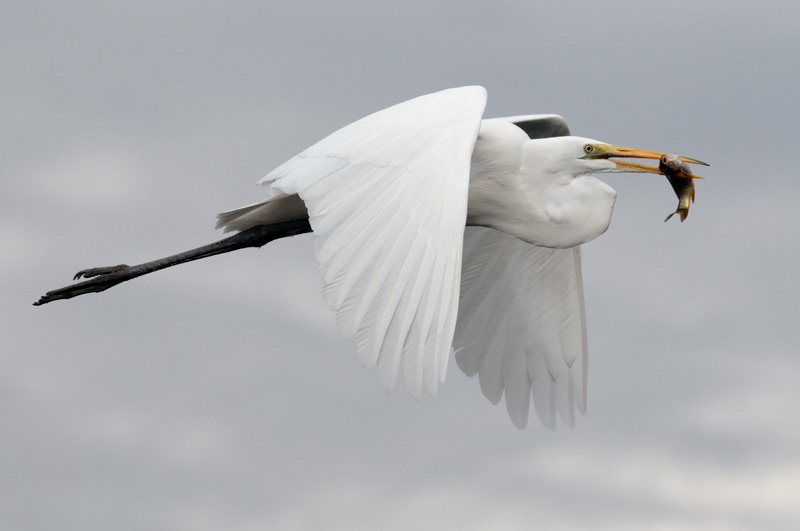
Often, birds in city habitats, become accustomed to human presence, recognize people individually, and adjust their threat level accordingly. A dog on the loose will immediately clear out all of the birds, while ducks quickly recognize those that feed them, and eagerly eat out of their hands. Some of the egrets have become used to me, and a few of them will let me get within about 6 feet, before they start walking or flying away.
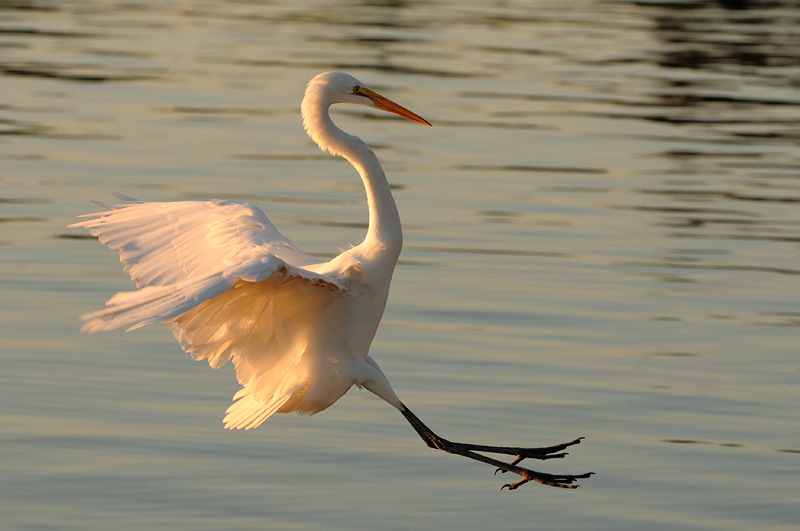
I find the most personally satisfying aspect of bird photography is achieving a measure of mutual respect with the birds, I'm not a threat, rival, mate or food, and subsequently the birds allow me to work my craft attempting to capture pre-conceived images, at close range.
Sunset light glowing through wings in flight is an image envisioned numerous times, photographing with the setting sun in my face was challenging and blinding at times, but worth the effort.
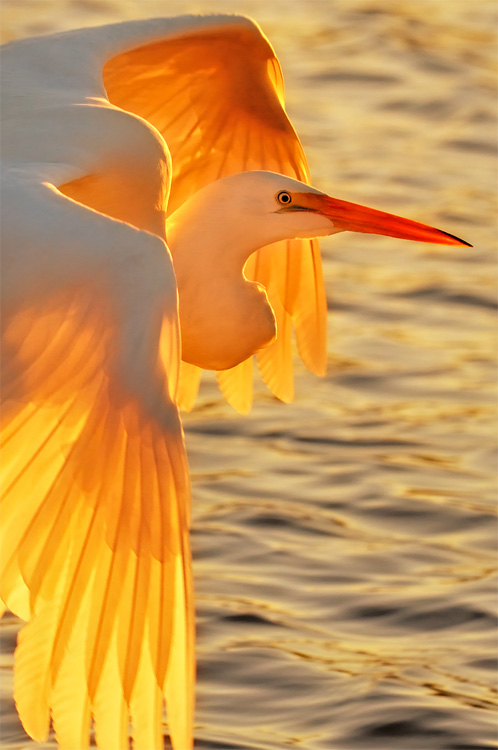
September through December are the best months for photographing egrets locally, tilapia populations in the rivers and lakes supply an over abundance of readily accessible food, the egrets take advantage, and so do I.
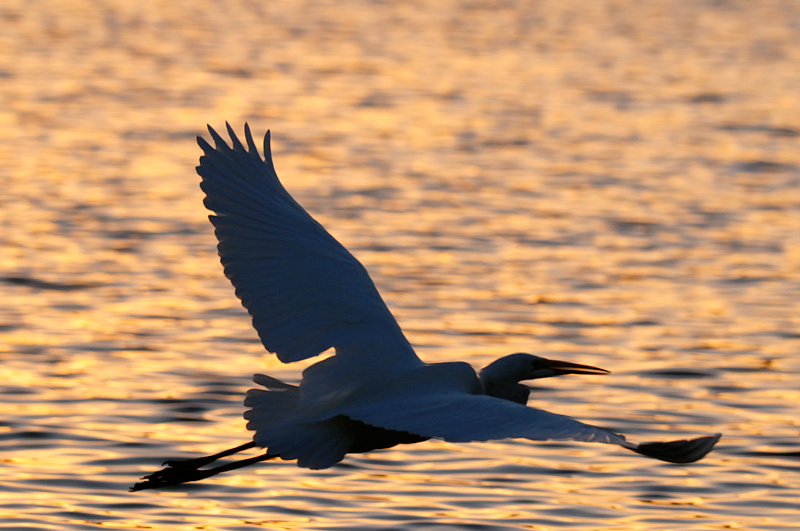
Bird Photography Home Page
White Egret Photo Gallery
Please
note: All content (including source) on this site are protected
by copyright.
Unauthorized use is prohibited.

